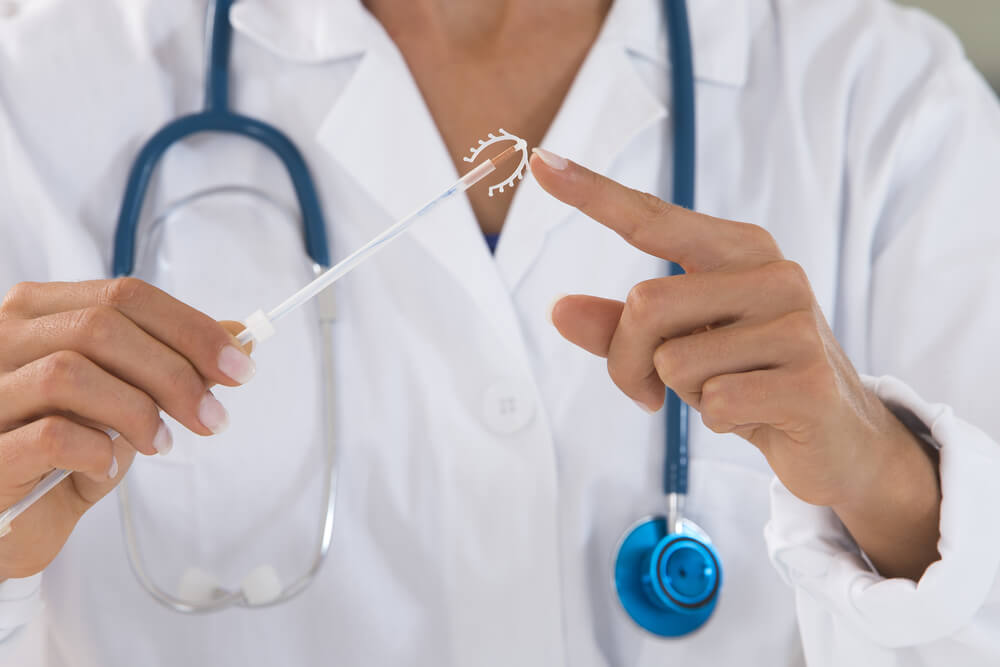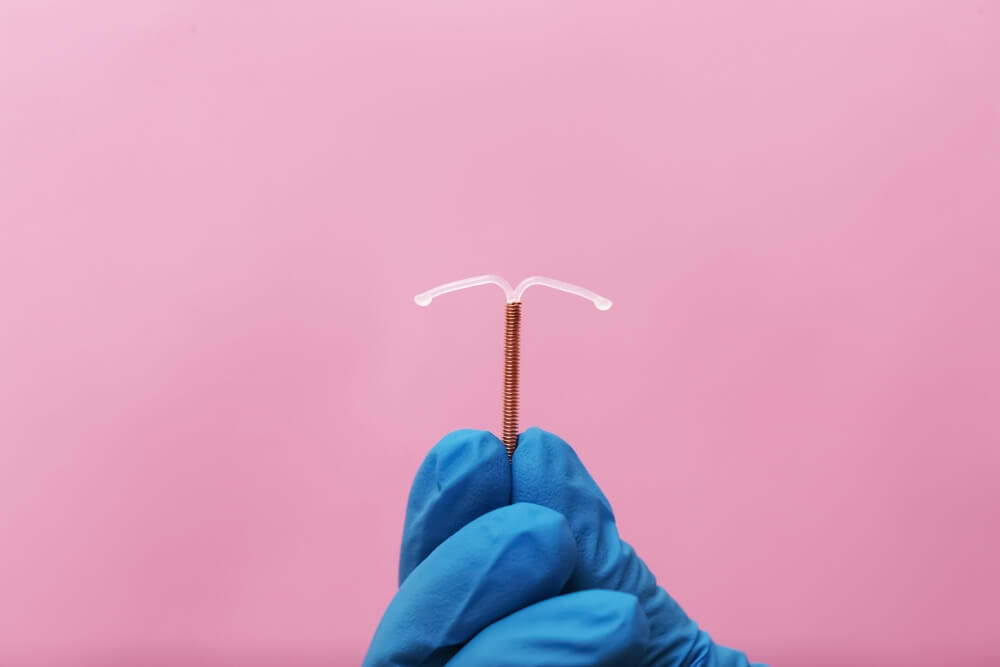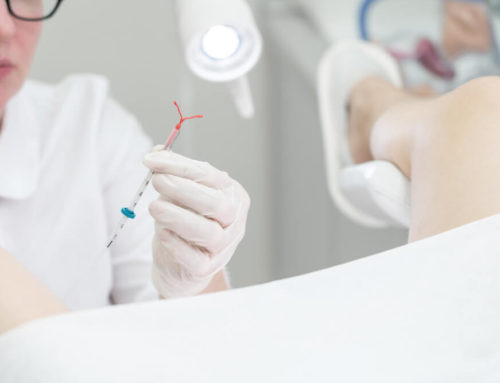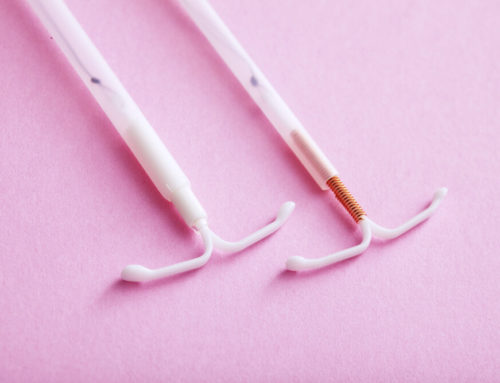If you are considering IUD removal, it is important to learn about the process and what to expect once it is removed. That is where this expert-reviewed article comes in handy. This guide will help you understand what happens after your IUD is taken out, whether there are any side effects you can expect, and when your period will return to normal.
Usually, the IUD removal side effects will vary from one person to the next, so consulting a healthcare professional is crucial. If you are on the lookout for the best experts in the field, choose a trusted female OBGYN in Kendall.
What is an IUD?
Before learning why some women opt for IUD removal, it is essential to understand what an “IUD” refers to. In brief, an IUD or an intrauterine device is a small, T-shaped device a doctor places in the uterus to prevent unwanted pregnancy, reduce abnormal menstrual bleeding, or assist with reducing pelvic pain or painful menstrual cramps.
Regardless of why it is placed, the patient must have the intrauterine device removed within three to ten years. The exact timing of the IUD removal will depend on the type of device the patient has.
Here are some quick facts on intrauterine devices, or IUDs:
- When they are appropriately inserted, intrauterine devices are over 99 percent effective at preventing unwanted pregnancy.
- An intrauterine device can be effective as soon as it is placed in the uterus.
- An intrauterine device can last anywhere from three to ten years, depending on the IUD type.
- You can opt for an intrauterine device anytime during the menstrual cycle.
- You must not use an intrauterine device if you are pregnant or you believe you may be pregnant.
- You can get the IUD taken out at any time by your healthcare professional.
- You can get pregnant immediately after IUD removal.
- Women with an IUD may experience irregular and possibly painful periods in the initial three to six months after placement.
- Some women who are new to IUDs may experience bleeding and spotting between periods within the first few weeks or months of use.
- Some women may experience discomfort when the IUD is being placed into the uterus.
- Women who have had pelvic infections in the past may not be suitable candidates for IUDs.
- An IUD is not a substitute for condoms. To protect yourself from sexually transmitted diseases, make sure to use a condom.
Who Should Consider IUD Removal?

Although intrauterine devices can last for many years, some women may want to get them removed earlier. There are also certain cases in which an IUD should be removed. You may need IUD removal if you:
- Want to get pregnant, or you think you are already pregnant.
- Have an expired intrauterine device. Your healthcare provider will tell you how long the IUD will last and when to get it taken out.
- Experience severe pain, headaches, or heavy bleeding.
- Have an IUD that has broken or that has moved out of the uterus.
- Experience increased blood pressure.
- Have endometritis, an inflammatory condition of the uterine lining.
- Enter menopause.
- Have cervical or endometrial cancer.
Remember, you can ask your healthcare provider to remove the intrauterine device at any time. That means you can opt for IUD removal at any time during your menstrual cycle.
As mentioned, an intrauterine device has a limited lifespan and needs to be removed from your uterus once it is no longer effective.
How Can You Prepare for IUD Removal?
Removing the intrauterine device is typically pain-free (or, in some cases, it can cause mild discomfort). You do not need to take special steps to prepare for IUD removal.
For those who are happy with their IUD but it is about to expire, it is possible to get your old IUD removed and replaced with a new one. You may get a new intrauterine device at the same doctor’s visit.
What Happens During IUD Removal?
The intrauterine device removal procedure is quick and easy. The removal will be the same for any IUD type, whether it is hormonal or copper.
Your doctor will ask you to lie on the table with the knees bent and the legs apart. A speculum will be placed into the vagina to help widen its opening. Next, the professional will locate the strings from the intrauterine device and, with the help of a grasping tool, gently pull the strings to remove the device. If the doctor cannot locate the threads, they will utilize other tools to remove the IUD.
In some instances, the intrauterine device will not come out easily. Sometimes, it can get stuck in the uterus’s wall. If this happens, the doctor may use medicine to widen the cervix and forceps to remove the device. To prevent pain or discomfort, the doctor may provide you with medicine.
Although the process sounds complex, it takes only a couple of minutes. If there are complications, the removal may take longer. However, a trained professional will ensure the procedure is quick and discomfort-free.
What are the IUD Removal Side Effects?
Usually, side effects are unlikely and very rare. If the removal process is done by a professional, you will not have to worry about infection and other risk factors.
However, in some cases, women may experience IUD removal side effects such as spotting, light bleeding, and cramps.
These side effects typically last for up to a few days, and they should subside with time. You can alleviate the IUD removal side effects such as cramps with over-the-counter medicine such as acetaminophen or ibuprofen. If the adverse effects do not go away after a few weeks post IUD removal, notify your doctor.
Different IUD Types

There are five different brands of intrauterine devices approved by the FDA for use in the United States. These include:
- Mirena
- Skyla
- Kyleena
- Liletta
- Paragard
These intrauterine devices are divided into:
- Copper intrauterine devices
- Hormonal intrauterine devices
Brands such as Liletta, Kyleena, Skyla, and Mirena utilize the progestin hormone to prevent unwanted pregnancy. Progestin is almost identical to progesterone, a hormone naturally made by the body. While Mirena and Liletta are effective for up to seven years, Kyleena works for a maximum of five, while Skyla needs to be taken out after three years.
On the other hand, if you are looking for a hormone-free option, you may want to consider copper IUDs or the Paragard brand. This IUD is wrapped in a small amount of copper, and it can protect you from unwanted pregnancy for a maximum of 12 years.
Hormonal vs. Copper IUDs: How Do They Work?
Hormonal and copper intrauterine devices prevent unwanted pregnancy by altering the movement of the sperm cells. By doing this, the sperm is unable to reach an egg and fertilize it. If the sperm cannot reach an egg, pregnancy becomes impossible.
Since copper repels sperm, it is an effective method to prevent fertilization. The most popular non-hormonal IUD, Paragard, utilizes copper.
On the other hand, the hormones in Skyla, Liletta, Mirena, and Kyleena prevent unwanted pregnancy by:
- Thickening the mucus on the cervix, blocking and trapping the sperm.
- Stopping the eggs from being released from the ovaries (or preventing ovulation). If there is no egg, pregnancy is unable to happen.
One of the most significant benefits of intrauterine devices is that they last for a few years. However, they are not a permanent solution for contraception. Women who decide to have children or patients who do not want to have an intrauterine device anymore can reach out to a professional for IUD removal. The good news is that the process is quick and often painless.
Benefits and Side Effects of IUDs
Even though an intrauterine device is a fantastic and effective way to avoid unwanted pregnancy, alleviate menstrual cramps, and reduce heavy menstrual bleeding, some risks are worth considering. Before getting an intrauterine device, consider the following advantages and disadvantages.
The advantages of IUDs include:
- Most patients with a uterus are suitable candidates for intrauterine devices.
- Hormonal IUDs will make your periods shorter, lighter, and less painful over time
- Women who are breastfeeding can safely use an intrauterine device.
- You can get pregnant after getting your IUD taken out.
- Typically, you will not experience hormonal adverse effects such as headaches, acne, and breast tenderness.
- No proof exists that an intrauterine device increases the chances of uterus cancer, ovarian cancer, or cervical cancer.
- There is no proof that an intrauterine device makes you gain or lose weight.
The disadvantages of an IUD include:
- You may experience heavy, long, and more painful menstrual cycles in the first few weeks or months after getting an intrauterine device.
- An IUD will not protect you against sexually transmitted infections or diseases, and you will have to use a condom.
- If you get infected after IUD placement, you may risk the chances of pelvic infection (if you do not reach out for immediate help).
Choosing a healthcare provider at a reliable and safe clinic is crucial for avoiding potential side effects and risks associated with intrauterine devices. If you do not select your healthcare provider carefully, you may experience pelvic infections and potential damage to your uterus.
FAQ
Will I Get My Period After an IUD Removal?
If you had a normal menstrual cycle before inserting the intrauterine device, you can expect your period to return. In some cases, it can take up to three months after getting your intrauterine device removed for the normal period to return.
Will I Experience Any IUD Removal Pain?
Overall, the intrauterine device removal procedure is painless and quick. However, some women may experience mild to moderate discomfort. Moreover, there can be some IUD removal pain if the device gets stuck or becomes difficult to locate. If this happens, your doctor may need to use a special tool to grab the device and remove it. If you are worried about discomfort or pain, you can ask your healthcare provider for over-the-counter medications.
The IUD Is Taken Out: When Can I Get Pregnant?
Women who wish to get pregnant can try to conceive immediately after removing the IUD as fertility, or ability to get pregnant, returns right away.
According to experts, women can try to get pregnant the first month after intrauterine device removal. The estimated amount of time it takes to get pregnant will depend on the woman’s age and other gynecological or medical issues. Complications with getting pregnant after IUD removal may be related to other fertility issues unrelated to the device.
I Don’t Have My Period After IUD Removal: Why Does This Happen and What Can I Do?
In some cases, a late or absent period after IUD can be a potential sign of pregnancy. Although the chances are very slim, there is still a possibility you may be pregnant. Some other factors that may be causing issues after removing the IUD include:
- Intense exercise
- PCOS or polycystic ovary syndrome
- Uterine fibroids
- Chronic stress
- Weight changes
- Thyroid issues
If you do not get your normal menstrual cycle within a few months after getting your intrauterine device removed, talk to your healthcare provider for professional advice. Your doctor will help you identify the cause for your missed or late periods.
Overall, a missing or late period after IUD removal is usually normal. Although your period should come back fast, sometimes the body requires time to readjust. Seek out help if the adverse effects last for multiple months.
Who Is Not a Good Candidate for an IUD?

Most healthy women can use intrauterine devices. However, an intrauterine device may not be the best choice for you if you have:
- A pelvic infection.
- An unusually shaped uterus.
The copper IUD is not a good choice for you if you have:
- Low iron levels
- Endometriosis
- Heavy or abnormal periods
- Wilson’s disease
The hormonal IUD is not a good choice for you if you have:
- Serious liver disease.
- Been treated for cancer such as breast cancer.
When Should I Call a Doctor?
Talk to a healthcare professional if you have an IUD and you notice any unusual side effects such as pain and bleeding. Although some of these symptoms (such as spotting) may be normal in the first few months when the device is inserted, they should not last for multiple months.
We’re Here to Help You!
If you are looking for the best professionals in the medical field, we at New Age Women’s Health are here to help you. Book an appointment with us today to get started.





